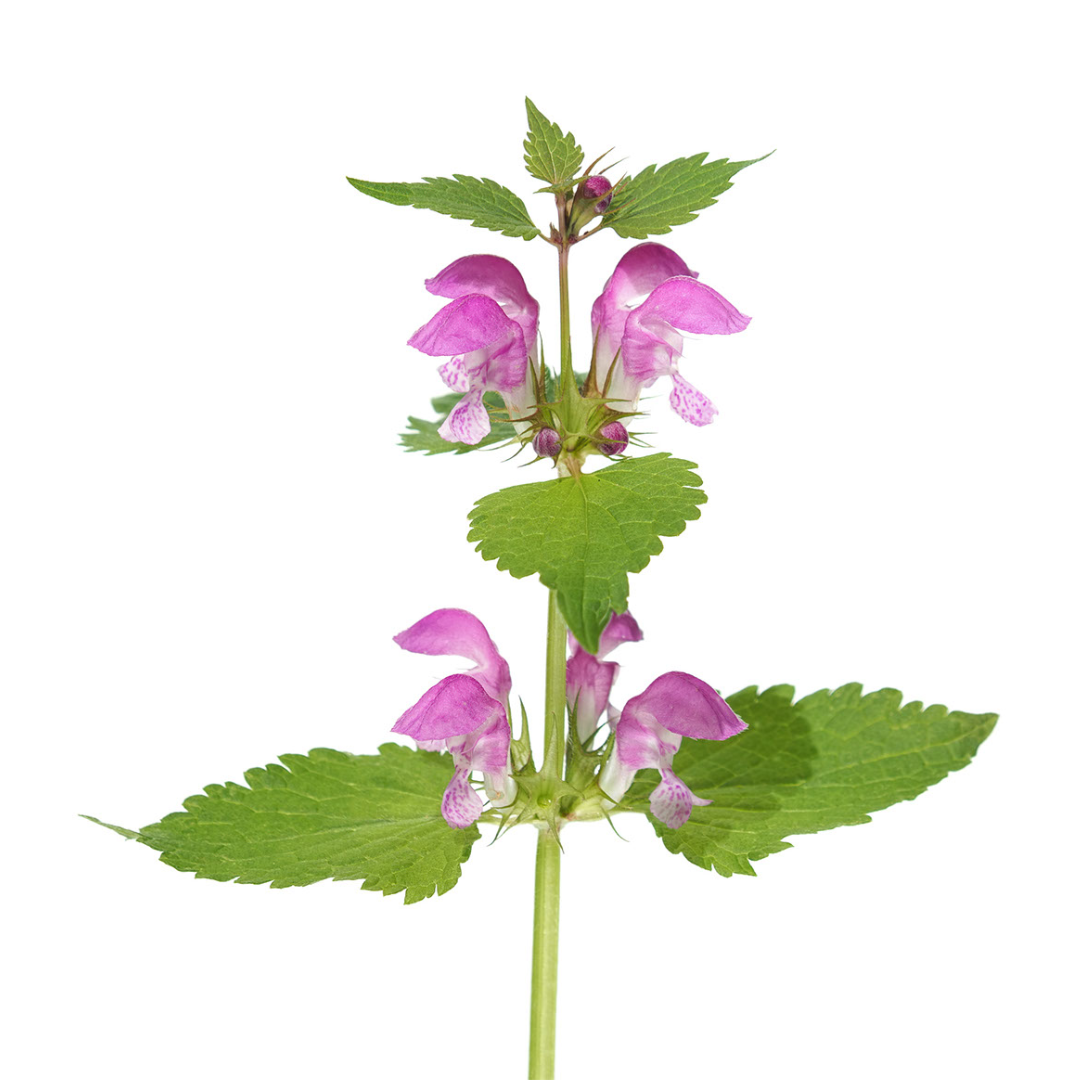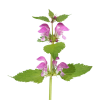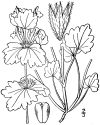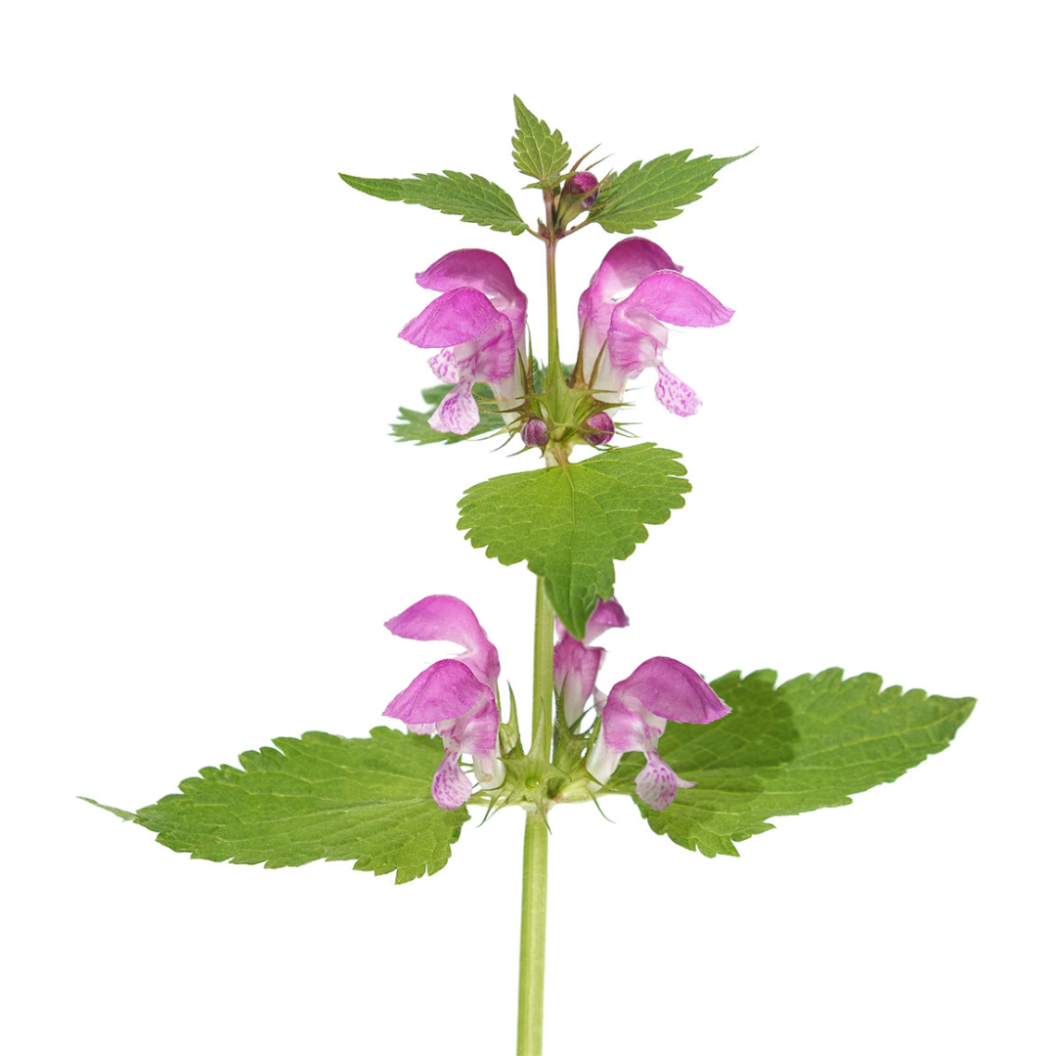





Henbit
DESCRIPTION: Henbit is a weed that is found in almost every part of the world. It has small, purplish-pink flowers that grow in clusters and leaves that are shaped like a heart, with serrated edges. They grow low to the ground and spread out like a mat. It often appears in the early parts of spring and can grow in many different types of soil. In some locations it is considered valuable due to the erosion control it can offer cropland fields. Unlike many other plants in the mint family, henbit does not have a strong or distinctive odor.
SCIENTIFIC NAME: Lamium amplexicaule
OTHER NAMES: Dead-nettle, Red Dead-nettle, Purple Dead-nettle, Giraffehead, Blind Nettle
LEAF TYPE: Broadleaf
FLOWERS: The henbit's flowers are small and delicate, with a purplish-pink color that can vary in intensity. They grow in clusters at the top of the plant's stem and have a slightly tubular shape, with two lips that curve upwards. The petals are soft to the touch and give the flower a slightly fuzzy appearance.
LEAVES: The leaves are shaped like a heart with a pointed tip and serrated edges. They are soft and slightly fuzzy to the touch, with a green color that can sometimes have a purplish tint. The leaves grow opposite each other along the stem and are attached directly to the stem, without any sort of stalk or petiole. They have a slightly wavy appearance and are arranged in a spiral pattern as they grow up the stem.
LIFE CYCLE: Annual & Biennial
HOW TO IDENTIFY: The henbit is a distinct and recognizable plant, even for those who are not familiar with it. Look for small, pinkish-purple flowers growing in clusters at the top of the stem. The leaves will be shaped like hearts with serrated edges and will attache directly to the stem. One of the most distinct identifying features of henbit is the fact that the stem is square-shaped, not round like many other plants. It will grow low to the ground and spread out like a mat, often forming dense patches.
MECHANICAL CONTROL RECOMMENDATIONS:
1. Hand pulling - More Info
2. Mowing - More Info
3. Tilling - More Info
4. Mulching - More Info
5. Using a Weed Puller - More Info
6. Herbicide Application - More Info
CHEMISTRY RECOMMENDATIONS:
"Pre-emergent herbicides:
Prodiamine: Prodiamine is a commonly used pre-emergent herbicide that can help prevent the germination of weed seeds, including Lamium amplexicaule. It's often used on lawns and turfgrass areas.
Dithiopyr: Dithiopyr is another pre-emergent herbicide that can provide control of a range of broadleaf and grassy weeds, including henbit. It's often used on residential lawns and commercial turf.
Isoxaben: Isoxaben is a pre-emergent herbicide that targets broadleaf weeds, including henbit. It's often used in landscape beds and ornamental areas.
Benefin: Benefin is used as a pre-emergent herbicide in some lawn and turf settings to control various annual grasses and broadleaf weeds, including henbit.
Pendimethalin: Pendimethalin is a pre-emergent herbicide that can be used for controlling annual grasses and certain broadleaf weeds, including Lamium amplexicaule.
Oryzalin: Oryzalin is used as a pre-emergent herbicide in various settings to control a range of annual grasses and broadleaf weeds.
Trifluralin: Trifluralin is a pre-emergent herbicide used to control a variety of annual grasses and broadleaf weeds, including some that may be similar to Lamium amplexicaule.
Post-emergent herbicides:
2,4-D: 2,4-D is a common selective herbicide that targets broadleaf weeds, including Lamium amplexicaule. It's often used in lawn and turf settings.
Dicamba: Dicamba is another selective herbicide effective against broadleaf weeds, including henbit. It's often used in combination with other herbicides for enhanced control.
MCPA: MCPA is a broadleaf herbicide that can be used to control various weeds, including Lamium amplexicaule. It's often used in lawns, pastures, and non-crop areas.
Triclopyr: Triclopyr is effective against a range of broadleaf weeds, including tough-to-control species. It's often used in lawn and turf situations.
Clopyralid: Clopyralid is a post-emergent herbicide that can provide good control of certain broadleaf weeds, including henbit. It's used in various settings, including lawns and non-crop areas.
Quinclorac: Quinclorac is effective against a variety of broadleaf weeds, including some that are difficult to control. It's often used in turfgrass areas.
Aminopyralid: Aminopyralid is a post-emergent herbicide that can control a range of broadleaf weeds, including henbit. It's used in various settings, including lawns, pastures, and non-crop areas.
Glyphosate: While glyphosate is a non-selective herbicide that kills most plants, including broadleaf and grass species, it should be used with caution as it can harm desirable plants. It's typically used for spot treatment in non-turf areas.
Selective herbicides:
2,4-D: 2,4-D is a widely used selective herbicide that targets broadleaf weeds like henbit. It's often used in lawns, pastures, and non-crop areas.
Dicamba: Dicamba is effective against broadleaf weeds, including Lamium amplexicaule. It's often used in combination with other herbicides for enhanced control.
MCPA: MCPA is a selective herbicide that targets broadleaf weeds. It's commonly used in lawns, turf, and non-crop areas.
Triclopyr: Triclopyr is effective against many broadleaf weeds, including tough-to-control species. It's often used in lawns and turf situations.
Clopyralid: Clopyralid is a selective herbicide that can control a range of broadleaf weeds, including henbit. It's used in various settings, including lawns, pastures, and non-crop areas.
Aminopyralid: Aminopyralid is effective against a variety of broadleaf weeds, including Lamium amplexicaule. It's used in lawns, pastures, and non-crop areas.
Non-Selective herbicides:
Glyphosate: Glyphosate is one of the most widely used non-selective herbicides. It's effective against a wide range of plants, including henbit. It's often used for spot treatment in non-turf areas. However, be cautious as it can kill or damage other plants it comes into contact with.
Glufosinate: Glufosinate is another non-selective herbicide that can control a variety of weeds, including Lamium amplexicaule. It's often used in non-turf areas.
Diquat: Diquat is a contact herbicide that can be used to control various weeds, including henbit. It's often used for spot treatment in non-crop areas.
Paraquat: Paraquat is a fast-acting non-selective herbicide that can control a wide range of weeds. It's typically used for spot treatment in non-crop areas.
Pelargonic Acid: Pelargonic acid is a fatty acid-based herbicide that can desiccate and kill weeds on contact, including Lamium amplexicaule. It's often used in non-turf areas.
Recommended Prevention
Recommended Control

